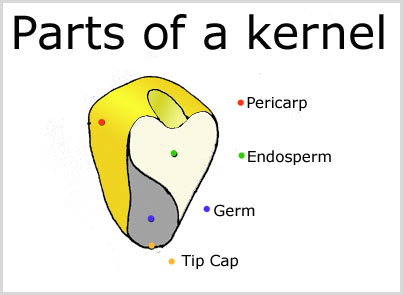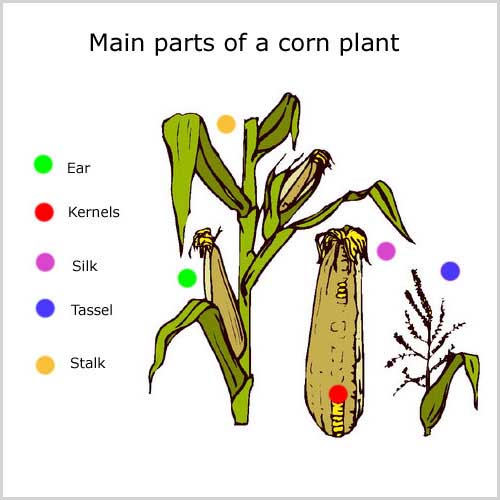


Physical Structure of CornIn the heat of the summer, nurtured by its sisters and fed by the heat and light of the sun, corn grows tall and straight. Like our ancestors, we wait anxiously to pick it cook it and enjoy its sweet taste. Because corn is one of the world's food staples, botanists, archaeologists, and anthropologists have spent a long time studying its origins and structures. Theories to explain the origin of corn were debated throughout the 20th century. In the early 1900s, Nobel Prize winners George W. Beadle and Rollins A. Emerson documented the chromosomal (strand of DNA that carries genetic information) and genetic similarities between corn and teosinte. They concluded that teosinte was corn's ancestor. The corn that we grow today is the result of crossbreeding of unrelated plant species through a process known as hybridization. The seeds from the most successful of these hybrid plants are kept and resown. Years of careful seed selection, along with back-crossing with parental plants, ultimately results in a new variety of plant. Many plants today are developed through hybridization under carefully controlled conditions in universities, experimental farms and laboratories. Our ancestors developed many of the varieties of corn we have today through a similar process on the land. The corn we grow today is very familiar to us - but do you know all the parts of a corn plant? Do you know that there are male corn plants and female corn plants? |
|
|||||||||||||||
|

To learn more about the basic structure of the corn plant and quiz your own self-knowledge, visit this site (www.kycorn.org/thecornyfacts/kernel.html). |
||||||||||


